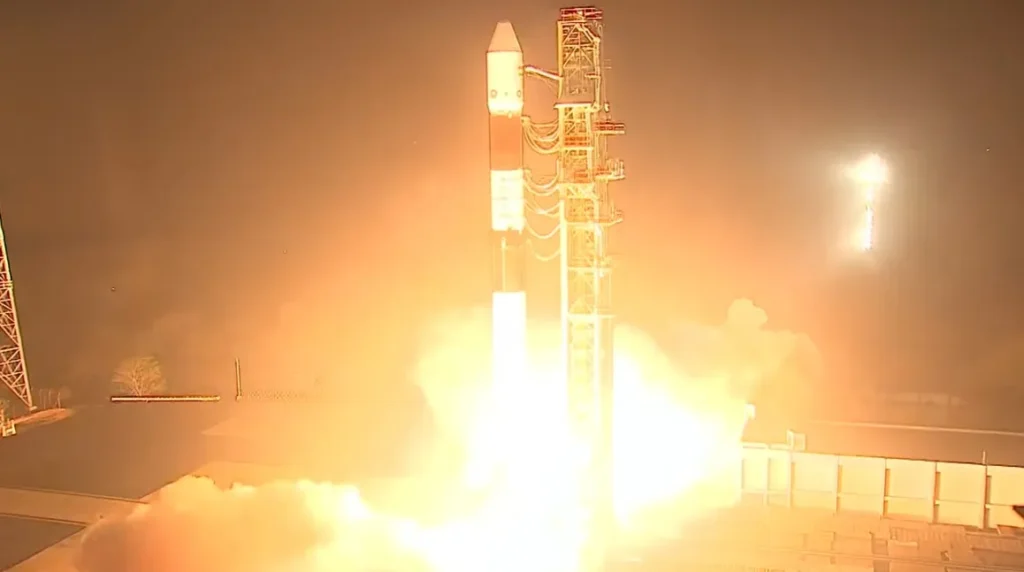ISRO Achieves Historic First On-Orbit Docking Milestone
India Achieves Milestone with Successful On-Orbit Docking Test, Paving the Way for Ambitious Space Endeavors

- India Achieves Historic On-Orbit Docking, Setting the Stage for Pioneering Space Missions
In a landmark achievement, India successfully completed its first on-orbit docking test between two spacecraft, a significant milestone that underscores the nation’s growing prowess in space technology and sets the stage for ambitious future missions, including lunar exploration and human spaceflight.
The Space Docking Experiment (SpaDeX), a meticulously planned mission by the Indian Space Research Organisation (ISRO), launched from the Satish Dhawan Space Centre in Sriharikota on December 30 aboard a Polar Satellite Launch Vehicle (PSLV). The mission involved two 220-kilogram spacecraft, SDX01 (the chaser) and SDX02 (the target), which were deployed into orbit approximately 475 kilometers above Earth.
- From Delay to Success
Originally, the docking of the two spacecraft was planned for January 7. However, unexpected positional drifts between the satellites caused delays, leading to concerns that the mission might have to be postponed until March. Nevertheless, on January 15, ISRO overcame these hurdles and successfully docked the spacecraft.
ISRO’s official statement on X highlighted the precision and expertise involved: “Maneuver from 15m to 3m hold point completed. Docking initiated with precision, leading to successful spacecraft capture.” This achievement places India alongside space giants such as the United States, Soviet Union/Russia, and China, making it the fourth nation to accomplish this technological feat.
SpaDeX Docking Update:
— ISRO (@isro) January 12, 2025
SpaDeX satellites holding position at 15m, capturing stunning photos and videos of each other! 🛰️🛰️
#SPADEX #ISRO pic.twitter.com/RICiEVP6qB
- National and International Acclaim
Prime Minister Narendra Modi, present at ISRO’s headquarters in Bangalore during the critical docking operations, congratulated the scientists and the broader space community. In his statement on X, he said, “Congratulations to our scientists at ISRO and the entire space fraternity for the successful demonstration of space docking of satellites. It is a significant stepping stone for India’s ambitious space missions in the years to come.”
This sentiment was echoed by ISRO’s newly appointed chairman, Dr. V. Narayanan, who took office on January 13. Dr. Narayanan praised the entire team for their dedication and technical prowess that culminated in this historic success.
- The Significance of SpaDeX for India’s Space Future
The SpaDeX mission is a critical element of India’s broader strategy to achieve independent human spaceflight capabilities through the Gaganyaan program, which aims to send Indian astronauts into space by 2026. The program’s roadmap includes uncrewed test flights planned for 2025.
Looking further ahead, India plans to establish the Bharatiya Antariksha Station by 2035, a significant move that will place it among the elite spacefaring nations capable of maintaining a permanent presence in space. Moreover, India has set an ambitious goal for a crewed lunar landing by 2040, further showcasing its commitment to advancing space exploration.
The docking technology demonstrated in SpaDeX is not just pivotal for Gaganyaan but is also crucial for India’s future lunar missions. Specifically, the technology will play a vital role in the Chandrayaan-4 mission, aimed at sampling the lunar south pole around 2027 or 2028. This mission will require docking to transfer lunar samples from an ascent vehicle to a service module for return to Earth.
- Technological Innovations in SpaDeX
SpaDeX incorporates cutting-edge indigenous technology, which highlights India’s growing capability in developing sophisticated space systems. Key technologies include:
- Low-Impact Docking System: Designed to ensure a smooth and safe docking process, operating at an approach velocity of around 10 millimeters per second.
- Laser Range Finder (LRF) and Corner Cube Retro Reflectors: These advanced sensors enable precise measurements and positioning, crucial for successful docking.
- GNSS-based Relative Orbit Determination and Propagation (RODP) Processor: This technology ensures accurate relative positioning of the spacecraft, a critical factor in the docking process.
- India’s Expanding Launch Capabilities
2025 is set to be a record-breaking year for India’s space program, with ISRO planning at least 10 orbital missions. This includes the first launch of Skyroot Aerospace’s Vikram-1 rocket, a notable development in India’s private space sector.
The next mission on the horizon is a GSLV launch of the NVS-02 navigation satellite, scheduled for no earlier than January 26. This mission is a part of India’s ongoing efforts to expand and modernize its space-based navigation systems.
In a move to further enhance its launch capabilities, the Indian government approved the construction of a Third Launch Pad (TLP) at the Satish Dhawan Space Centre on January 16. The new launch pad is intended to support next-generation launch vehicles, including the reusable Next Generation Launch Vehicle (NGLV), which is designed to increase the country’s launch frequency and reduce costs.
- India’s Path to Space Supremacy
India’s achievements in space are a testament to its growing technological expertise and strategic vision for the future. From the success of SpaDeX to the development of human spaceflight and lunar missions, India is steadily carving a niche for itself on the global space stage.
- India Achieves Milestone with Successful On-Orbit Docking Test
India has successfully completed its first on-orbit docking of two spacecraft, a major milestone in its space program. The Space Docking Experiment (SpaDeX) involved two 220-kilogram spacecraft launched from the Satish Dhawan Space Centre on December 30. Initially delayed due to positional drifts, the docking was completed on January 15, making India the fourth nation to achieve this feat.
This achievement is crucial for India’s future space missions, including the Gaganyaan program, aiming for its first human spaceflight by 2026, and the Chandrayaan-4 lunar mission scheduled for 2027-2028. Prime Minister Narendra Modi and ISRO Chairman Dr. V. Narayanan praised the success as a stepping stone for India’s ambitious space goals.
India plans a record number of launches in 2025 and is expanding its launch infrastructure with a new launch pad to support next-generation vehicles. The SpaDeX mission showcases advanced indigenous technology essential for future space exploration, positioning India as a significant player in global space endeavors.



